Development of Model Intelligent Transport Systems Deployments for the Asian Highway Network
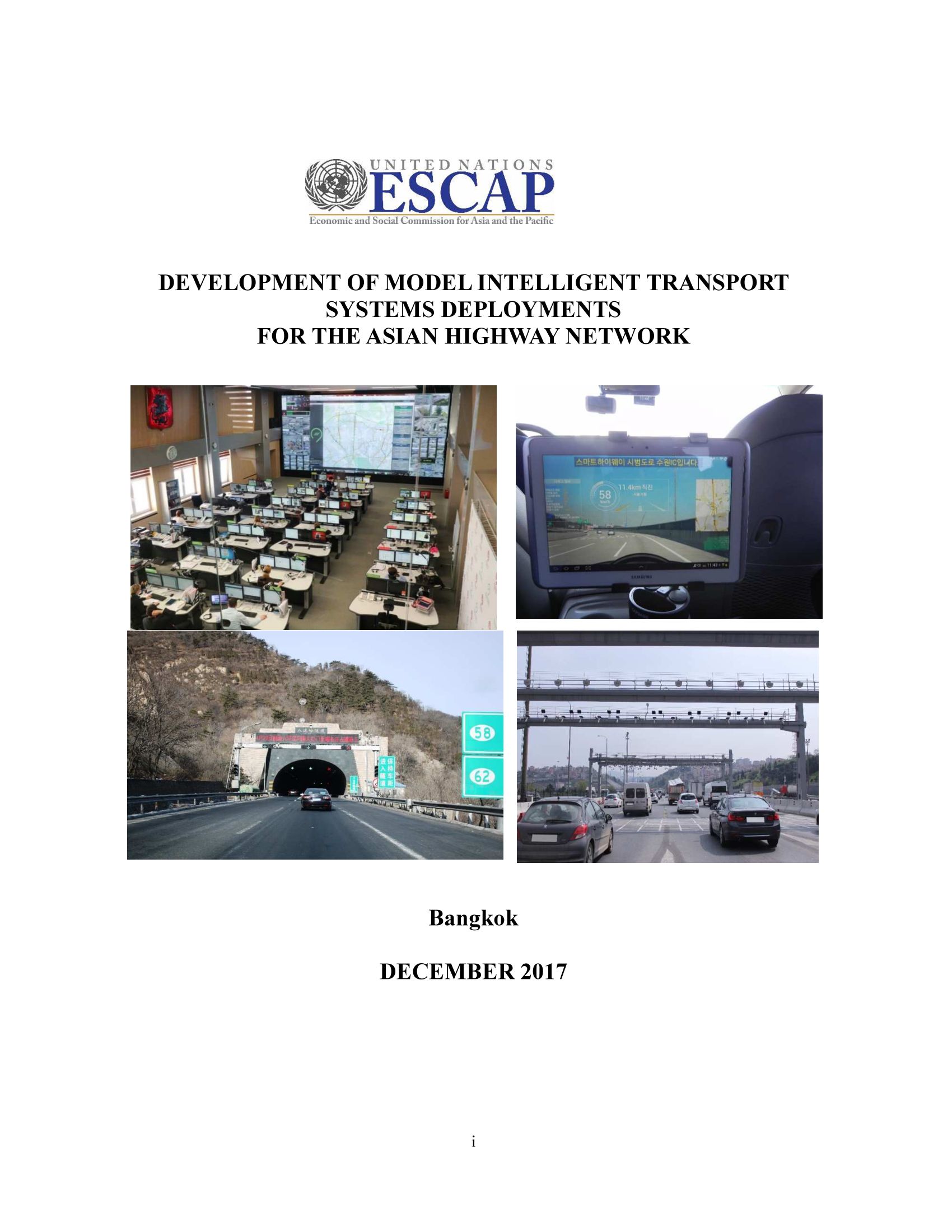
Intelligent transport systems (ITS) is a set of transport infrastructure and operation systems that maximize safety, efficiency and convenience of the road system by using advanced information technologies while minimizing costly large-scale road construction. While there is currently no single internationally agreed definition for ITS, it is generally understood to be the combination of technologies, most of which involve information and communications technology (ICT) as a platform, that are embedded within conventional transport infrastructure. These systems are a combination of technologies based on the new capabilities offered by modern ICT systems.
As one of the initiatives towards sustainable transport connectivity in Asia and the Pacific, the ESCAP secretariat, in association with the Korea Expressway Corporation conducted a study on the development of model ITS deployments for the Asian Highway network during 2015-2017. Under the study, the secretariat collected information on deployment of intelligent transport systems in China, Republic of Korea, Russian Federation and Turkey. In January 2016, with a view to assessing ITS deployments in the Asia-Pacific region, the secretariat conducted a survey to gather information about the status and practices of ITS deployments in Asian Highway member countries. Responses from 21 member countries indicated that the deployment status of ITS services varied extensively across the region.
Transport and Communications Bulletin for Asia and the Pacific 89: Improving Road Safety
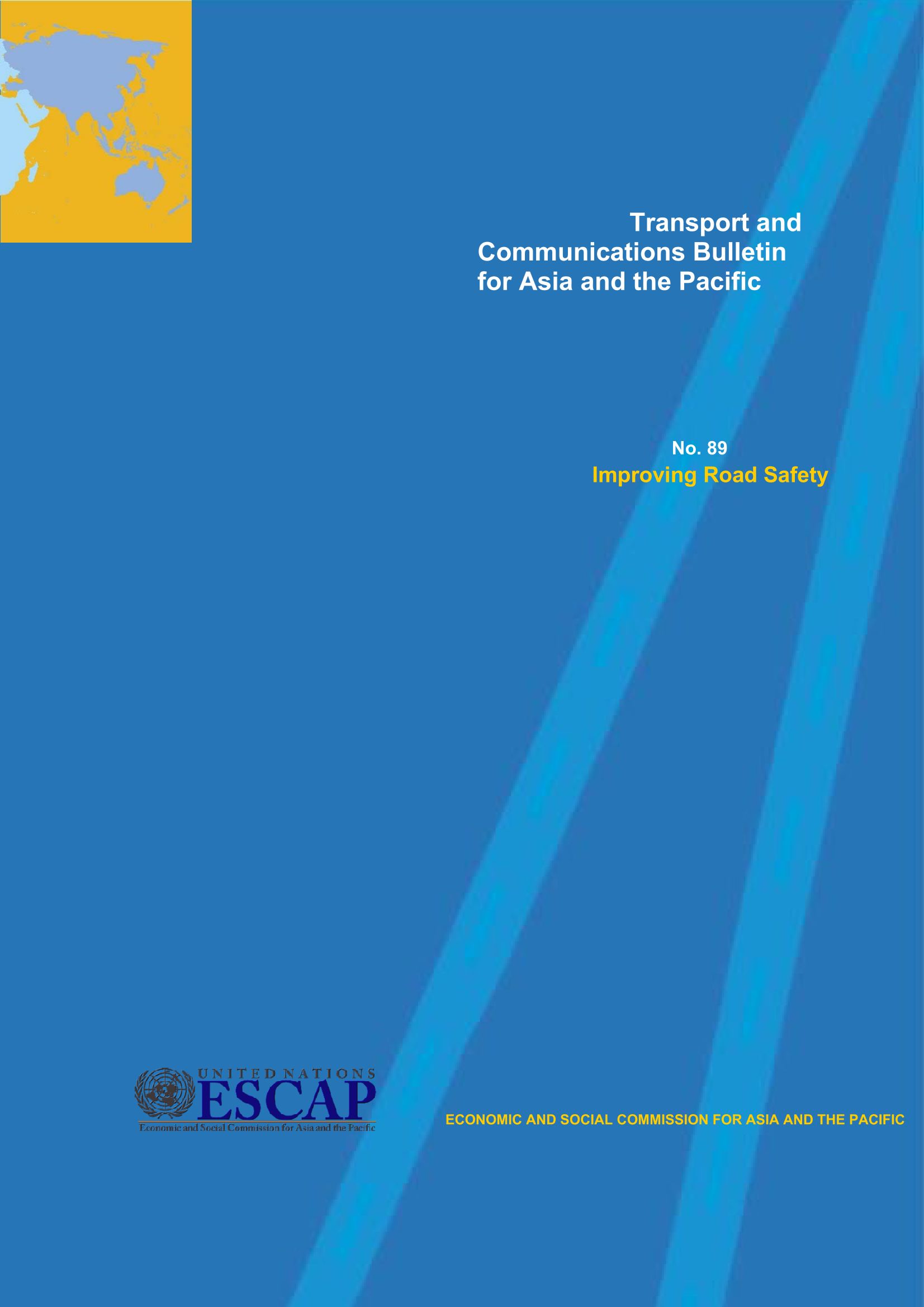
The Transport and Communication Bulletin for Asia and the Pacific is a peer-reviewed journal that is published once a year by the Transport Division of the United Nations Economic and Social Commission for Asia and the Pacific (ESCAP). The Bulletin is a medium in which knowledge, experience, ideas, policy options and information on the development of transport infrastructure and services in the Asia- Pacific region is shared. The main objectives to these are to stimulate policy-oriented research and to increase awareness on the policy issues and responses of the transportation industry. The Bulletin attempts to widen and deepen the debate on the issues of interest and concern in the transport sector.
Transport plays an integral part in the development of social and economic opportunities. It facilitates the movement of people, goods, labors, resources, product and ideas across regions. Different transport modes and services and the state of domestic and international connectivity can greatly influence the well-being of the people and their own environment. However, as the levels of motorization in Asia and the Pacific continue to increase, it also has resulted in an increase of traffic fatalities and injuries. At the rate of the growing epidemic of traffic accidents, the issue of road safety has become a global development agenda. Managing the transport sector can make a direct and indirect contribution towards the achievements of the SDGs if the three pillars of sustainable development – economic, social and environmental – are integrated into transport policies, planning and operation. Two SDGs targets are relevant to road safety -target 3.6 to halve the number of road fatalities and injuries by 2020 and target 11.2 to provide safe, accessible and affordable sustainable transport for all by 2030.
The current issue of the Bulletin focuses on the theme of “Improving Road Safety”. Each of the six papers contribute different interesting aspects of the theme, and include various approaches in improving road safety in a particular context.
Road Safety is a sustainable development challenge for the member countries of the Economic and Social Commission for Asia and the Pacific (ESCAP). In 2016, approximately 1.35 million people were killed in road crashes globally. The economic and social consequences of this are enormous. In recent years, road safety has been receiving greater attention from the international community, and in 2010, the General Assembly proclaimed the period from 2011 to 2020 as the Decade of Action for Road Safety. The global commitment to road safety was further strengthened by the General Assembly through the adoption of resolution 70/1 on 25 September 2015 of the 2030 Agenda for Sustainable Development, as reflected in targets 3.6 (by 2020 halve the number of global deaths by road accidents) and 11.2 (by 2030, provide access to safe, affordable, accessible and sustainable transport systems for all, improving road safety, notably by expanding public transport, with special attention to the needs of those in vulnerable situations, women, children, persons with disabilities and older persons) of the accompanying Sustainable Development Goals.
Road safety has been a major concern in Asia and the Pacific, as 60 per cent of global road deaths in 2016 occurred in the region. In line with the trend globally, road safety has received greater attention from high- level policymakers among ESCAP member countries. At the Ministerial Conference on Transport, at its third session, held in Moscow from 5 to 9 December 2016, the Asia-Pacific transport ministers renewed their commitments towards improving road safety by adopting the Ministerial Declaration on Sustainable Transport Connectivity in Asia and the Pacific, which was endorsed by the Commission in it its resolution 73/4 of 19 May 2017. Under this resolution, members and associate members of ESCAP have been encouraged in meeting their commitments under the Decade of Action for Road Safety (2011-2020) and 2030 Agenda for Sustainable Development.
Notably, road traffic deaths in the ESCAP region declined from 777,016 in 2010 to 733,541 in 2013, and then increased to 812,172 in 2016. The South and South-West Asia subregion accounted for 48.13 per cent of the road deaths.
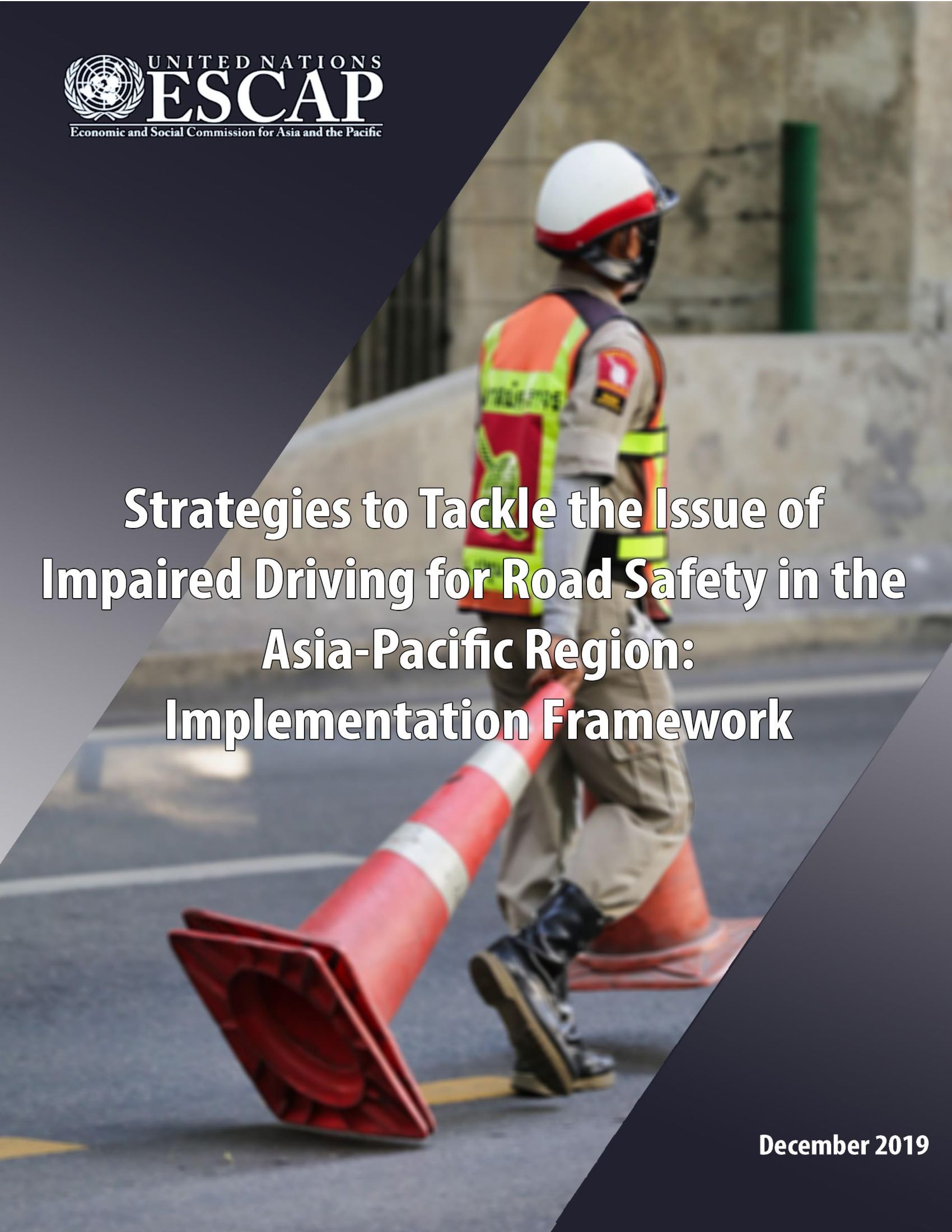
Asian Highway Design Standard for Road Safety: Design Guidelines
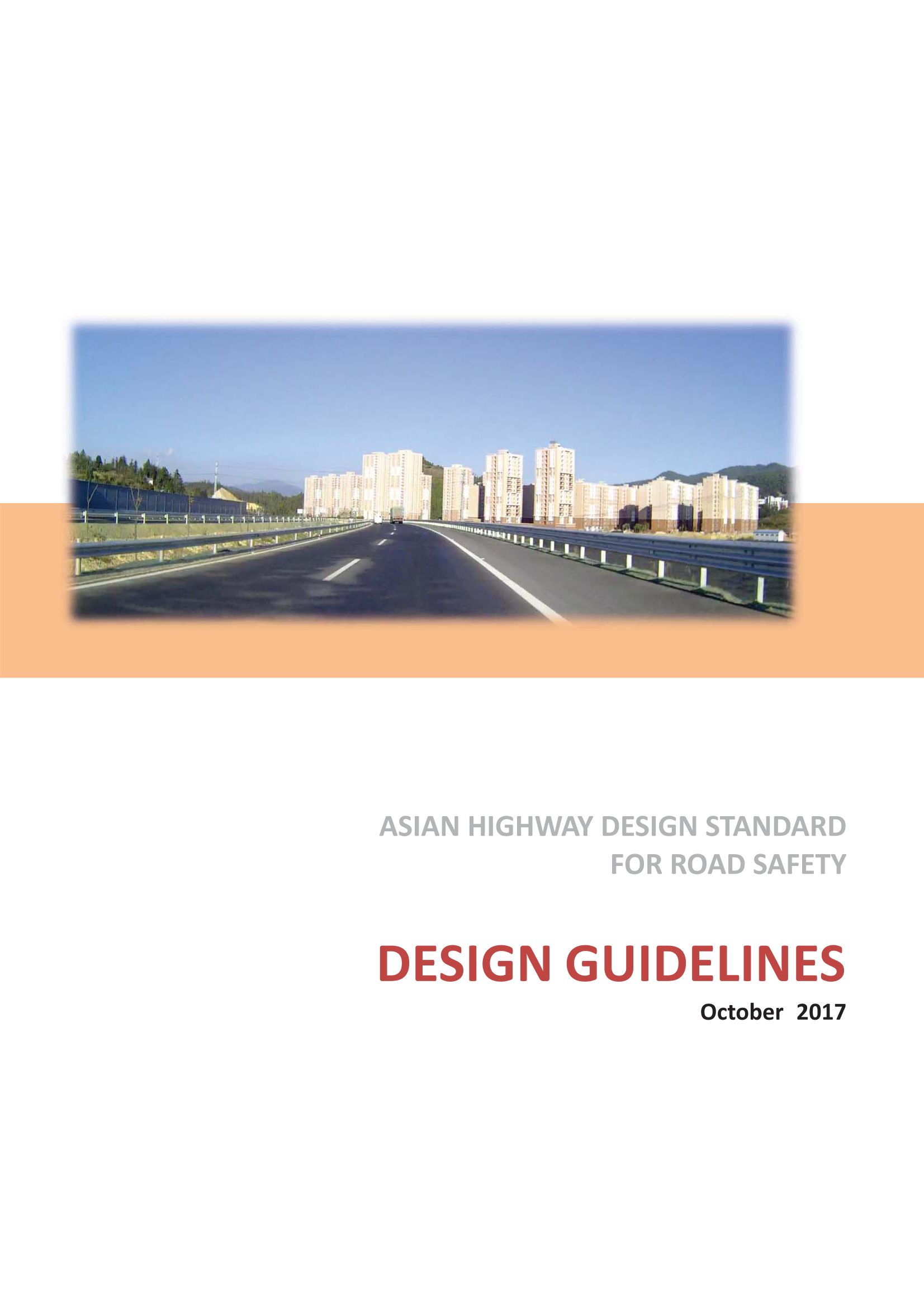
This document consists of recommended guidelines related to the “Asian Highway Design Standard for Road Safety” to the Intergovernmental Agreement on the Asian Highway Network.
While the guidelines are not mandatory in nature, the member countries of the Asian Highway network are encouraged to refer to the principles and recommendations given in the document for new road projects and improvements of existing sections of Asian Highway routes under their jurisdiction.
Due to the diverse circumstances of the Asian Highway Network, the adoption of particular recommendations would need to take into account prevailing social, economic and technical considerations.
In all cases, sound engineering skills are required to formulate specific solutions to address project issues which could be complex in reality. Flexibility and innovations are desirable as far as safety performance is not undermined and consistency is reasonably maintained.
This document does not necessarily reflect the view of the United Nations Economic and Social Commission for Asia and the Pacific (UNESCAP).
Annex II BIS - Asian Highway Design Standards for Road Safety
This document shall be read in conjunction with other documents forming the Intergovernmental Agreement on the Asian Highway Network.
The contents of this document are structured in the following wording:
- “Shall” and “shall not” give mandatory requirements
- “Should” and “should not” give recommendations which are expected to be adopted unless there is a strong reason otherwise
- “May” and “need not” indicate potentially desirable options depending on circumstances
Asian Highway network member countries shall make every effort to comply with the design standards and are encouraged to give thorough consideration in adopting the recommendations given in the related design guidelines.
Member countries are encouraged to ensure that new roads of the Asian Highway network are 3-star or better (based on star ratings of the International Road Assessment Programme) for all road users and that more than 75 per cent of travel on existing roads is 3-star or better for all road users.
Member countries shall undertake road safety audit for road improvement projects in the Asian Highway network. Member countries shall also conduct road safety inspection (also known as road safety audit in some countries) for designated Asian Highway routes, within a reasonable time frame and at regular intervals, in accordance with practices in the respective countries.
Road safety infrastructure facilities shall be provided in the network with the view of optimized provision and consistency. The need for adequate flexibility is acknowledged given the existing road conditions and diverse circumstances among member countries.
Adequate attention should be given to the integration of road safety infrastructure facilities with streetscape design and the landscape as well as mitigation of any adverse impacts on the environment. Countries shall take advantage of the following road improvement projects and activities to elevate road safety in the Asian Highway network:
- Online road improvement or upgrading projects
- New bypass projects
- New addition of roads to the Asian Highway network
- Dedicated road safety improvement projects
- Routine maintenance activities
Where design speed or speed limit are quoted as criteria, due consideration should be given to the actual operating speeds of traffic.
The terms “nearside” and “offside” refer to the right side and left side respectively in the direction of travel where driving is on the right side of aroad. They refer to the left side and right side respectively in the direction of travel where driving is on the left side of a road. Nearside and offside are equivalent to passenger side and driver side respectively.
It is at the liberty of member countries and other bodies to make use of this document for roads other than Asian Highway routes.
Development of Road Infrastructure Safety Facility Standards for the Asian Highway Network
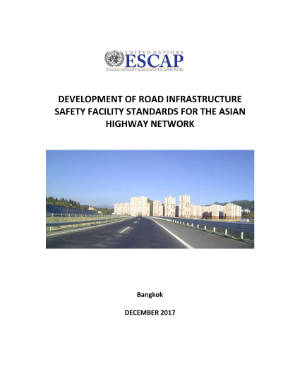
Road safety is a sustainable development issue that needs greater attention as road traffic fatalities and injuries place a significant burden on national economies. The Asia-Pacific region accounted for 58% of the global road traffic deaths in 2013. Between 2010 and 2013, while 16 Asian Highway member countries were successful in reducing road fatalities, others failed to do so. The seventh Goal of the “updated Regional Road Safety Goals and Targets for Asia and the Pacific, 2016-2020” emphasizes on developing the Asian Highway network as a model of road safety.
Studies show a strong correlation between infrastructure design and road safety and road engineering and design can influence the severity of the crashes. In this regard, the Annex II to the Intergovernmental Agreement on the Asian Highway Network which entered in to force on 4 July 2005 includes design standards for the Asian Highway Network. However, the design standard does not provide adequate guidance on road infrastructure safety facilities.
As one of the initiatives to address the road safety problem on the Asian Highway Network, the ESCAP secretariat, in association with the Korea Expressway Corporation conducted a study on the development of technical standards on road infrastructure safety facilities for the Asian Highway Network. A detailed literature review on existing standards for infrastructure element design and specification to address road safety in the Asian Highway member countries and other international sources was conducted. A list of 36 road infrastructure safety facilities was prepared. Detailed information on road infrastructure safety practices was collected from five participating countries. A survey was conducted to assess the prevalence, types and design standards of road safety facilities in the Asian Highway member countries in end 2015. The international road assessment programme (iRAP) methodology was used to illustrate how relative risk levels would change if road infrastructure safety facilities were added to the existing Asian Highway standard. It could be concluded that there is potential to promote the use of a broader range of road infrastructure safety facilities for the Asian Highway Network.
The study suggested that the Intergovernmental Agreement on the Asian Highway Network provides an adequate institutional platform for providing guidance to member countries in a number of areas and could further be used for promoting a coordinated approach to the development and adoption of standards of road infrastructure safety facilities. The study emphasizes on providing guidance to the Asian Highway member countries through a dedicated new annex to the Intergovernmental Agreement on the Asian Highway Network. In this regard, proposed mandatory minimum design standards of road infrastructure safety facilities for the Asian Highway Network which could serve as a draft Annex II bis “Asian Highway Design Standards for Road safety” to the Intergovernmental Agreement on the Asian Highway Network; and related design guidelines of road infrastructure safety facilities which could serve as a recommended practice for the Asian Highway Network have been developed. The study recommended the Asian Highway member countries to consider adopting and implementing technical design standards of road infrastructure safety facilities towards improving road safety on the Asian Highway Network.
Save lives: a road safety technical package
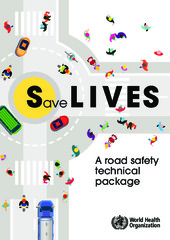
Each year, 1.25 million people die as a result of road traffic crashes and as many as 50 million people are injured. They are the leading cause of death among people aged 15-29 years. Nearly half (49%) of the people who die on the world’s roads are pedestrians, cyclists and motorcyclists. In addition to the grief and suffering they cause, road traffic crashes constitute an important public health and development problem with significant health and socioeconomic costs. Much is known about preventing road traffic deaths and injuries. Based on this knowledge, a road safety technical package has been developed to support decision-makers and practitioners in their efforts towards reducing road traffic deaths and injuries and achieving the Sustainable Development Goal targets 3.6 and 11.2.
Save LIVES: a road safety technical package is an evidence-based inventory of priority interventions with a focus on Speed management, Leadership, Infrastructure design and improvement, Vehicle safety standards, Enforcement of traffic laws and post-crash Survival. The 6 strategies and 22 interventions recommended in the package are interrelated and should be implemented in an integrated manner to effectively address road traffic deaths and injuries. Since countries are at varying stages of addressing this problem, this road safety policy package should not be seen as a one-size-fits-all solution, but rather as a guide to support decisions for scaling up road safety efforts.
Report on Road Safety Status and Recommendations for Myanmar
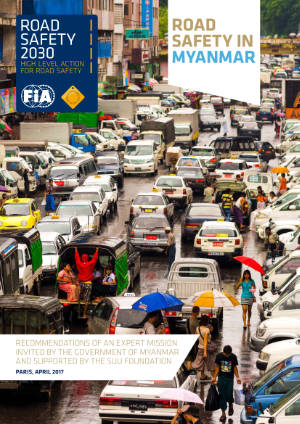
Given the rapid motorization that is occurring in Myanmar and the resulting increase in fatalities and injuries, there is an immediate and critical need to address the road safety situation in the country. Only if effective actions are taken, will the number of people killed and injured be reduced, along with the related human, social, and economic costs as well as the burden on the health sector.
Further to an invitation by the government of Myanmar, the FIA High Level Panel for Road Safety committed to sending a road safety mission of international experts to Myanmar in order to assess the current road safety situation and propose measures to reduce road casualties in the country.
This mission was undertaken as a joint initiative of the FIA High Level Panel for Road Safety and the Suu Foundation, with support from the Myanmar Government. The task of this mission was to carry out a scoping study: a study that takes a wide perspective for an assessment of road safety in Myanmar and based on that, coming to recommendations to improve road safety in Myanmar.
The results of the mission could be used to design a road safety strategy and to identify actions and interventions. The results can be used also by those (nationally and internationally, public and private) that have an interest to invest in improving road safety in Myanmar.
Translations Available
Safer City Streets: Global Benchmarking for Urban Road Safety
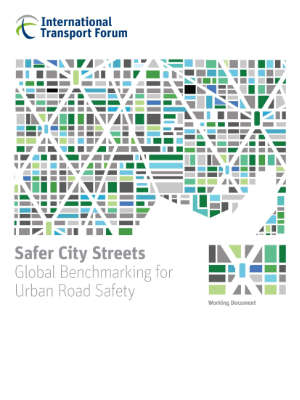
This document aims to support cities in setting road safety targets and to monitor progress in improving urban road safety. Pedestrians, cyclists and motorcyclists account for nearly 80% of urban traffic fatalities. Cities should thus intensify efforts to improve the safety of vulnerable road users. This document presents traffic safety indicators for different road user groups collected in 31 cities to facilitate the evaluation, monitoring and benchmarking of road safety outcomes. It places a particular attention on measuring the risk of fatality per unit distance travelled.
Safe Micromobility
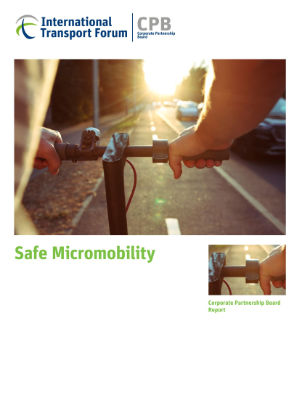
This report examines the safety aspects associated with the increasing use of e-scooters and other forms of micromobility in cities. The rise of micromobility challenges existing regulations for urban traffic and forces policy makers to rethink them. The report considers a range of actions to make urban traffic with micromobility safe, including in street layout, vehicle design and vehicle operation, user education and enforcement of rules. It also asks whether a shift towards micromobility can have potential safety benefits.
Pagination
- Previous page
- Page 8
- Next page